If you have ever seen fiber optic cabling, and specifically indoor fiber optic cabling, you have likely noticed that there are different colors of cables. Outdoor fiber is a bit harder to see from the outside since it is often black with text for identification (black for UV protection), but indoor is often shown in photos on STH and the rest of the Internet. In theory, you can color code fiber optic cabling however you want. In practice, there is ANSI/TIA-598. Now there are revisions to the standard, but for our discussion, the ANSI/TIA-598-D-2 is the big addendum that deals with OM5.
Guide to Indoor Fiber Optic Cable Color Coding and Meaning of Each Color
The official TIA-598 spec is worth looking at, but for non-military applications (e.g. what our readers are most likely to encounter) this is what the fiber optic cable coding will look like.
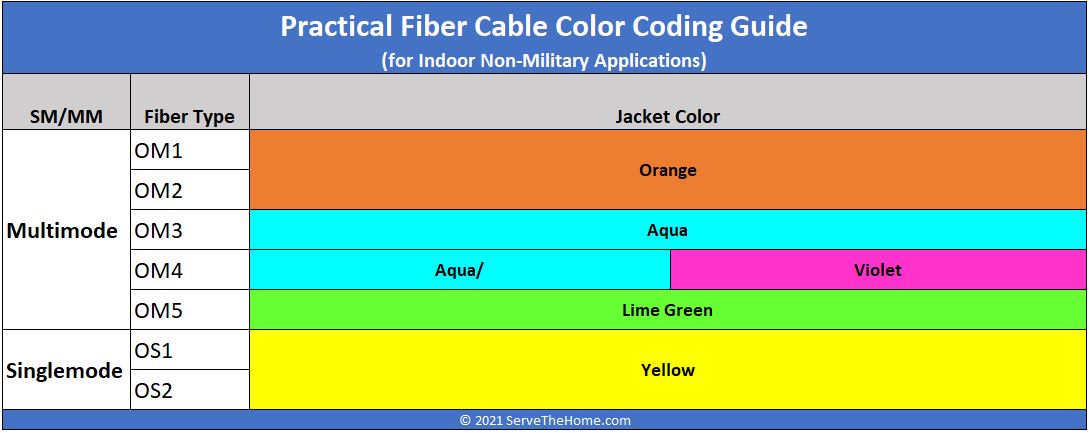
OM1 and OM2 are generally considered older cables at this point. We would suggest our readers start today with OM4/ OM5/ or OS2. OM3 can be less expensive than OM4, but the cost difference is often not that high these days. OM5, as we are writing this, is often sold at a premium. If you see Orange fiber optic cables, then those are probably not the cables you want to install today.
OM3 and OM4 cables are for multimode use. These are generally in an Aqua color making them fairly hard to tell apart from afar. Usually, you will see “OM3” or “OM4” printed on the cable.
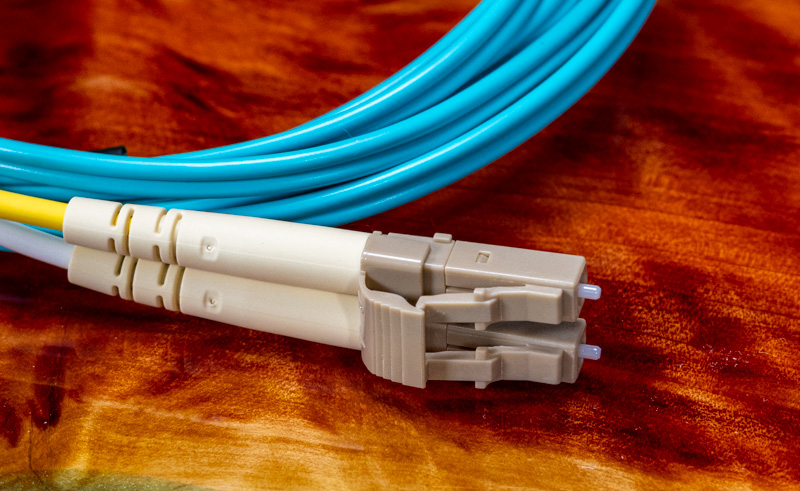
As one can imagine, telling OM3 and OM4 apart can be difficult. As a result, you will sometimes see violet used. We say violet, but this is better called “Erika violet”.
The big change is perhaps the OM5 specification that is designed to allow shortwave division multiplexing or SWDM to get 100Gbps connections over multi-mode fibers by using different wavelengths of light through the fiber. Currently, the vision is that each carries 25Gbps so four SWDM channels give 100Gbps total.
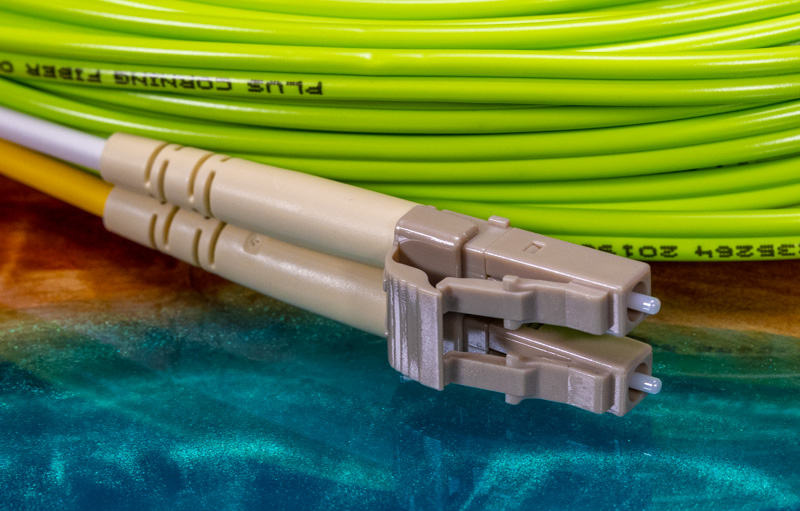
For single-mode fiber, yellow has been the de-facto color standard for years and that is true whether using OS1 or OS2 fiber.
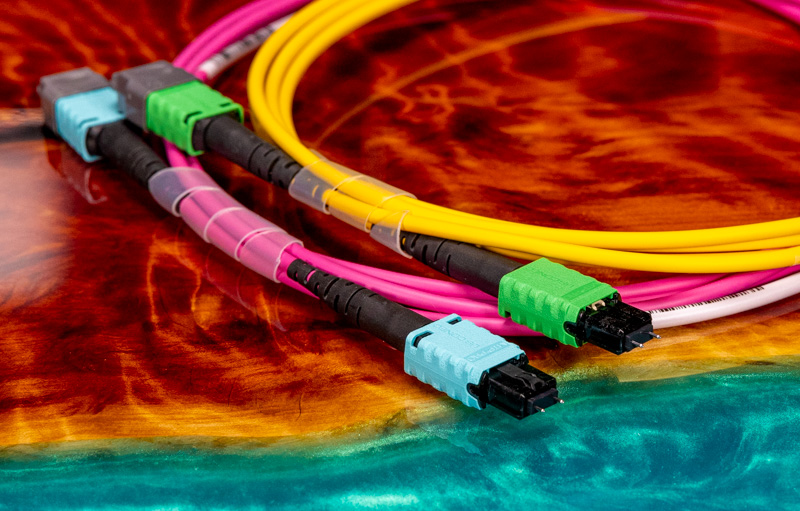
You may notice that in our chart, we are saying that these colors apply to non-military applications. That is another area but there are actually fewer specs such as there not being a color specified for OM3/ OM4 as an example. We also are skipping the polarization-maintaining single-mode fiber (blue) and 100/140 multimode fiber (orange) just to make it easier to get through.
Final Words
For our readers, Aqua OM3 cable may still be useful, but we think most will use OM4 (Aqua or Violet), OM5 (Lime Green), or OS2 (Yellow) cables. These specs are also written on the cables themselves so those are always worth checking out.
We have been covering many topics lately including APC and UPC in Fiber Connectors and Why This Matters and our Fiber Optic Networking Guide SC or LC Connector. The purpose of these guides is to make it easier to navigate the common options for our readers. We have many readers that deal with this every day and already know the content of these guides. We are instead attempting to make a set of resources for those who do not deal with fiber every day and just need some guidance on what they should be looking at. Many of the existing resources in the field go into huge amounts of depth about variations and that makes them harder to navigate. If you read STH, and do not do this every day, look for those three main types of cables.

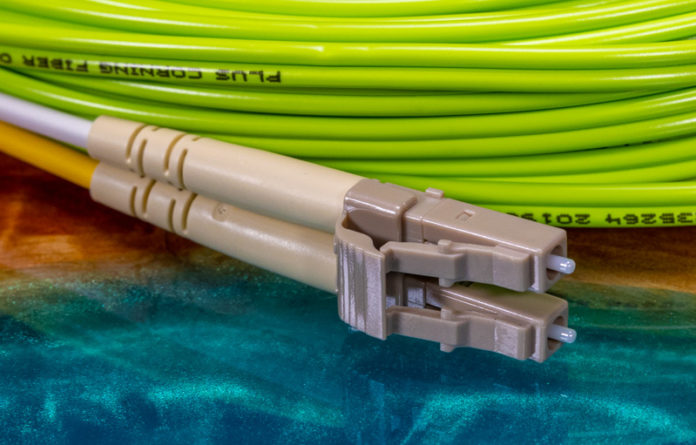



Most OM1 was grey not orange
Out of curiosity, not that it really matters to the end user, does this color code also apply to optical DACs too?
What is “optical DAC” ?
DAC cable are copper.
I think he means AOC not DAC. A direct attach copper cable would not have fiber. An AOC is optical but fiber with optics attached on both ends.
I don’t know that all AOC vendors adhere to this. But I think most would.